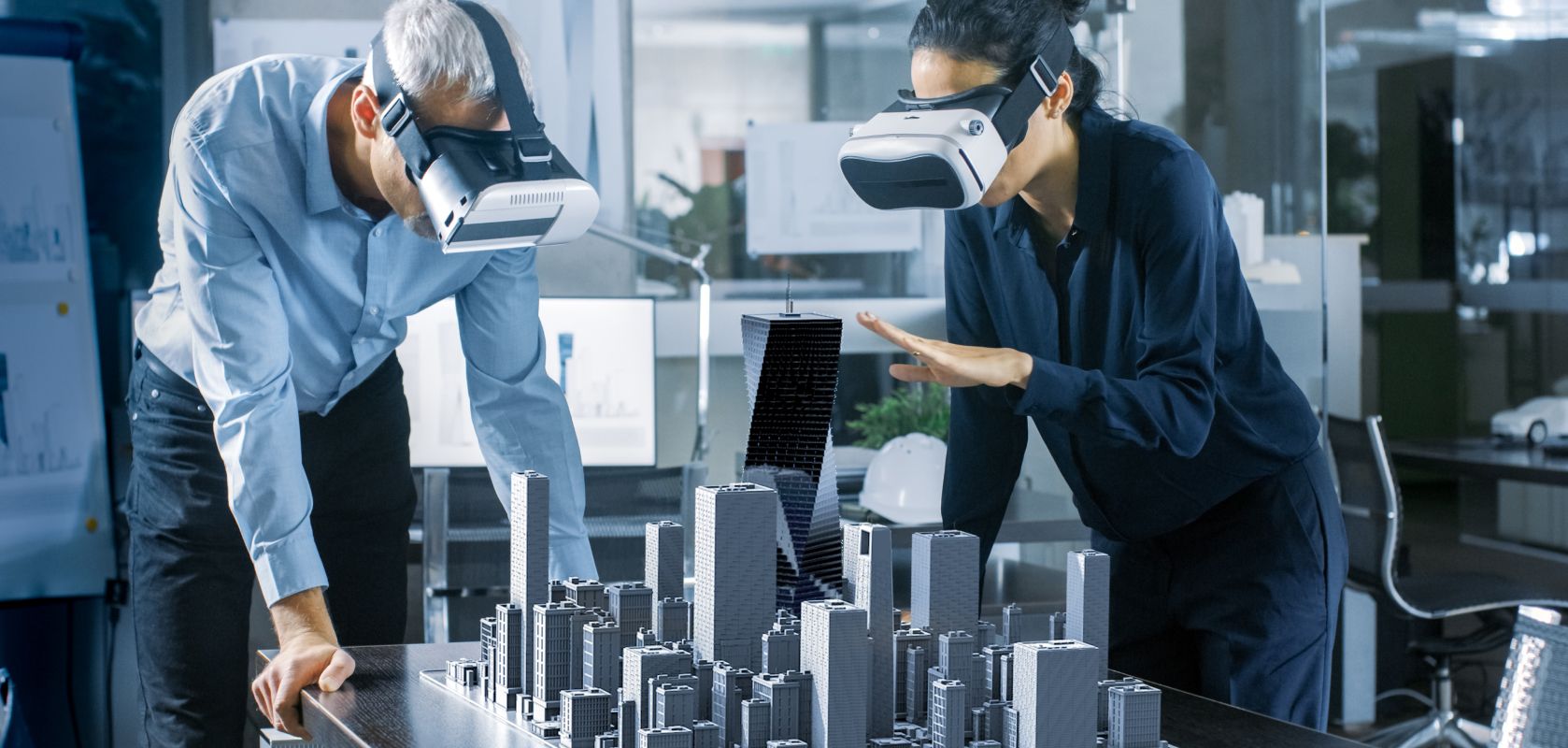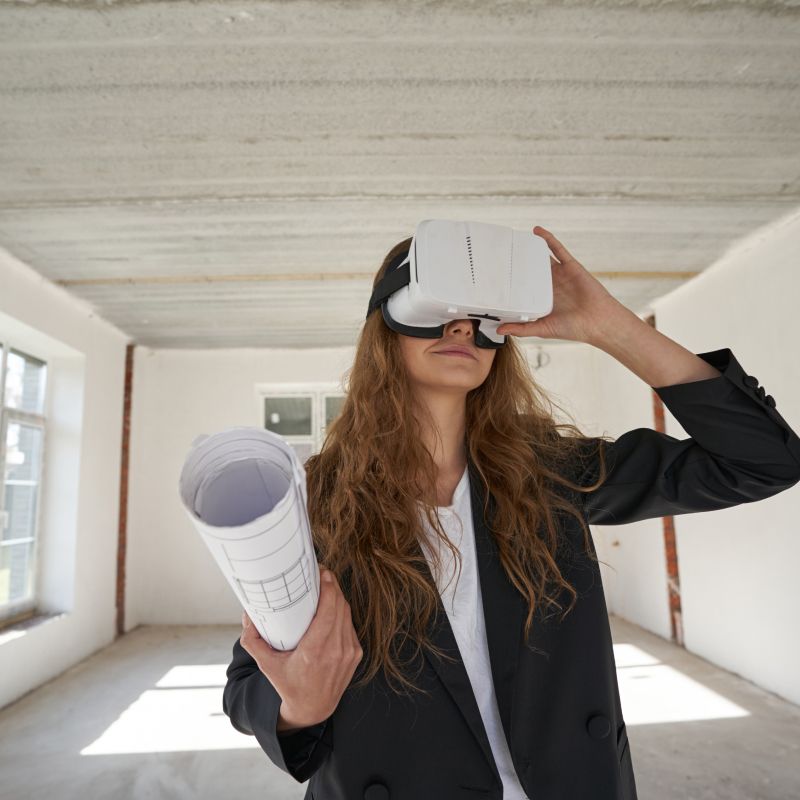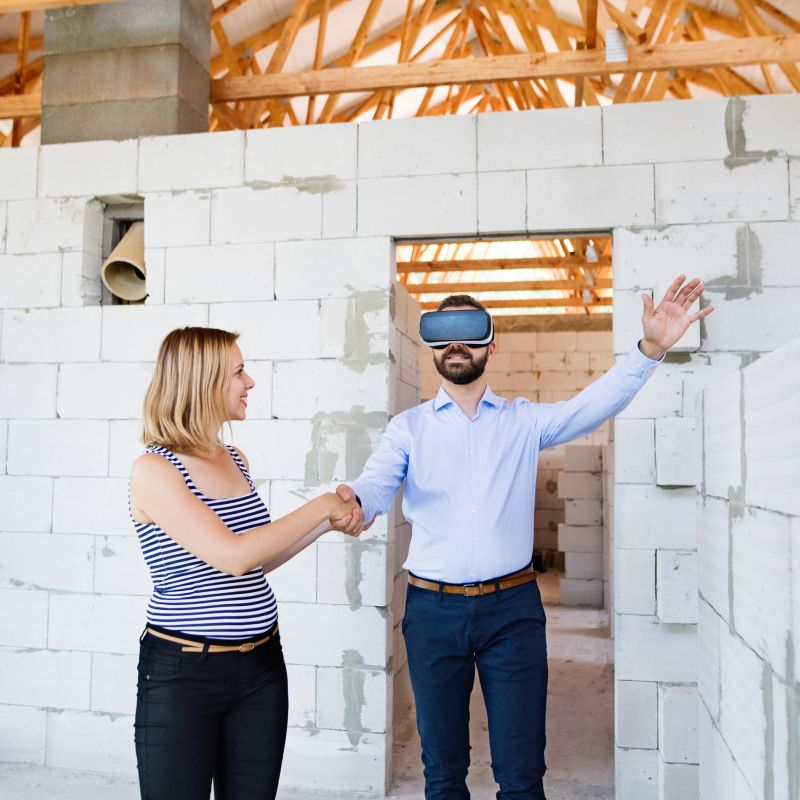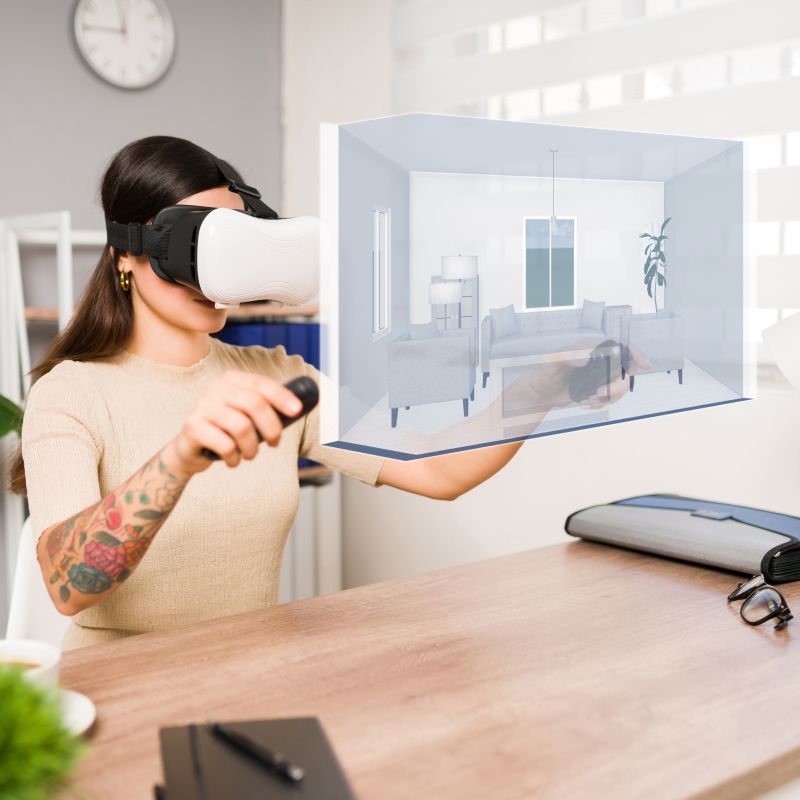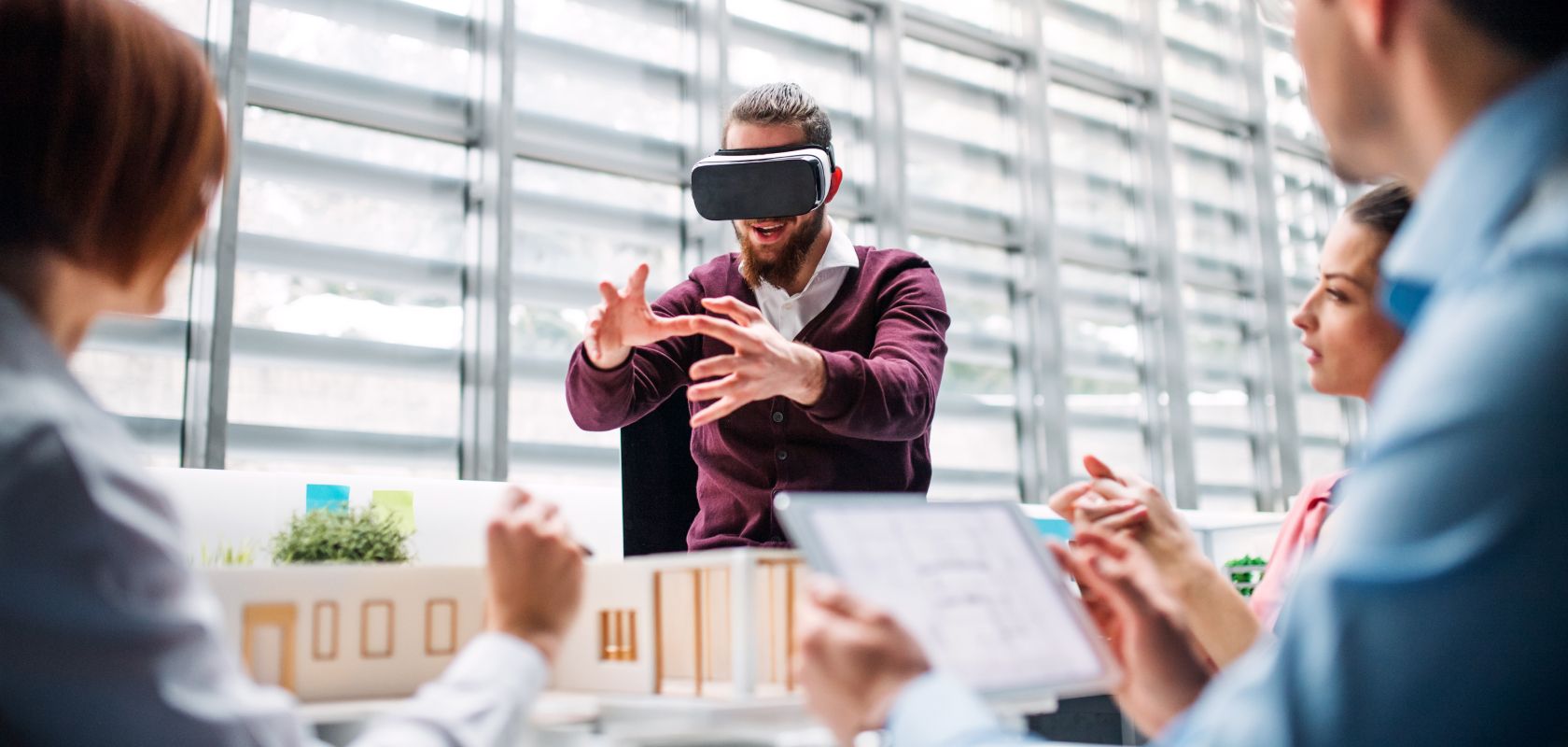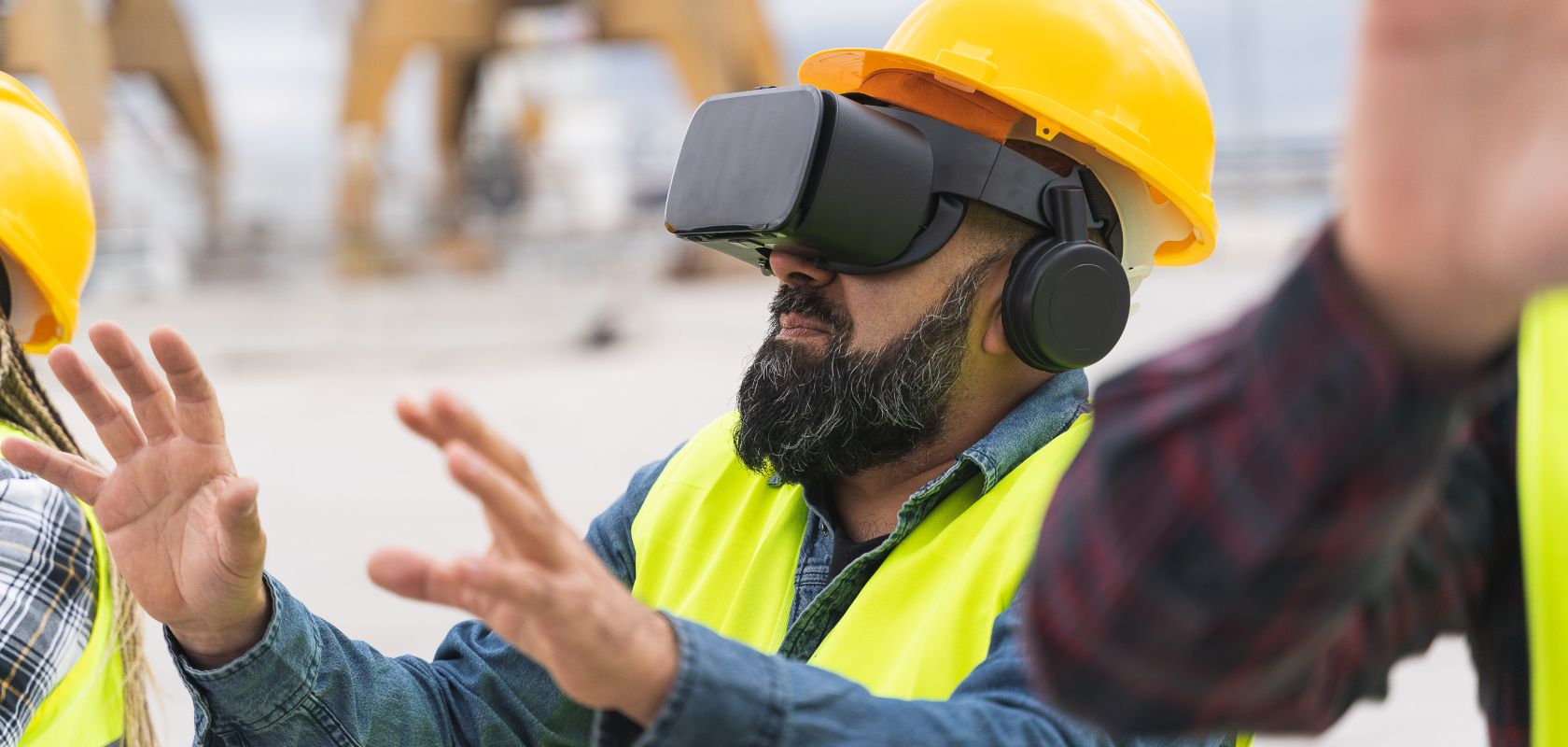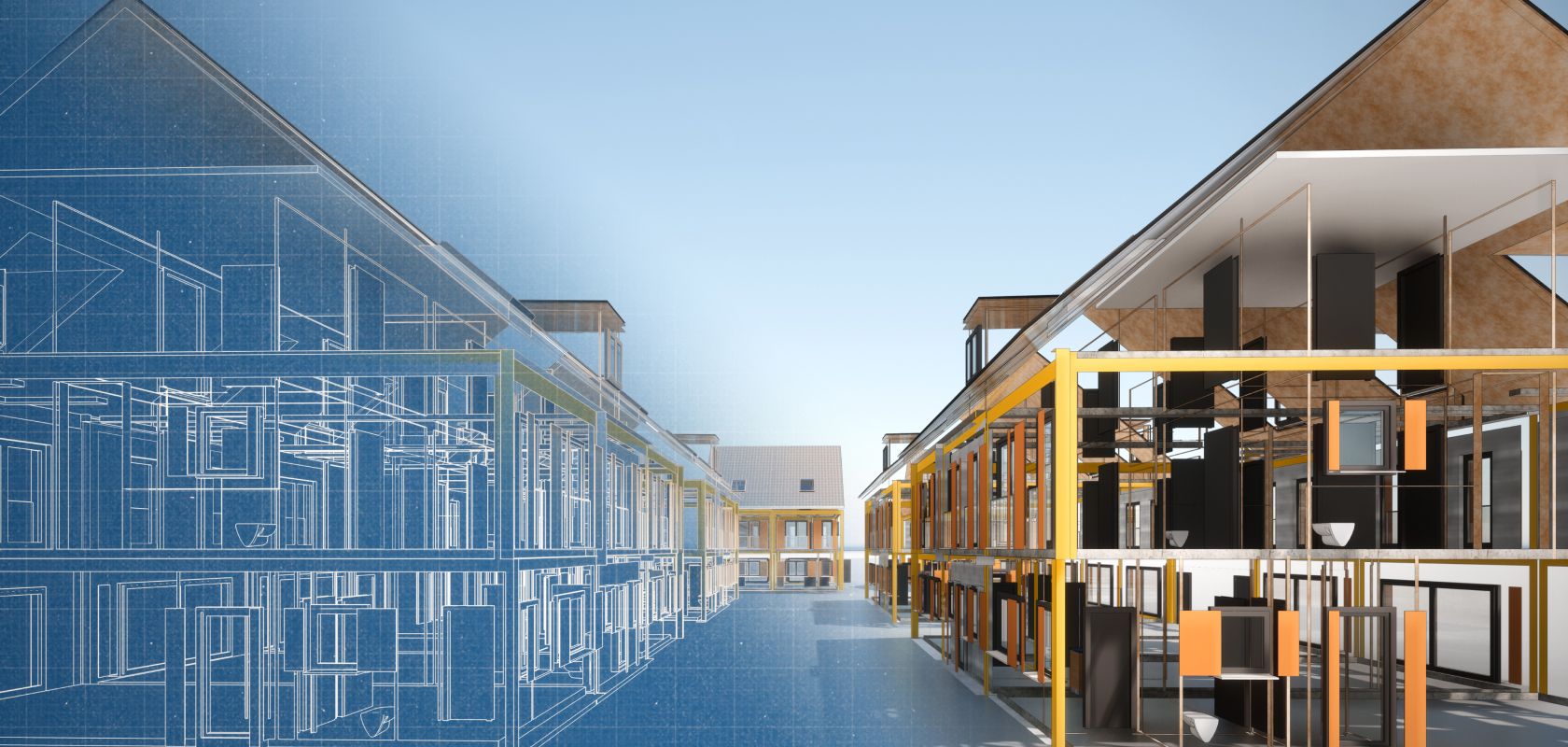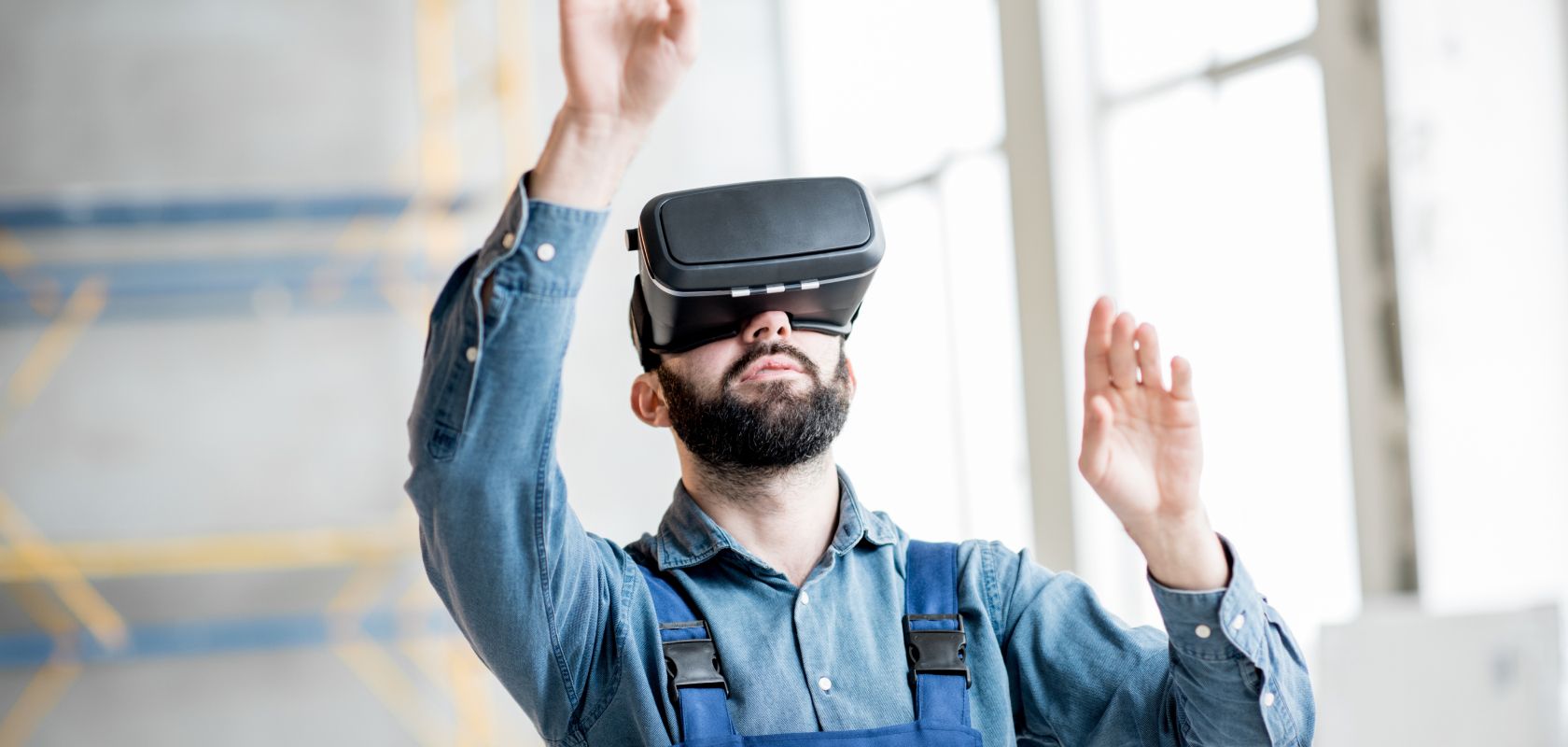ARCHITECTURE, ENGINEERING AND CONSTRUCTION (AEC)
The Transformative Power of AI and XR in Architecture, Engineering and Construction
Discover how our AI and XR solutions are transforming the AEC industry with scalable, real-world applications that deliver measurable value and impact.
Virtual reality and artificial intelligence have become powerful catalysts for digital transformation, going far beyond traditional communication tools. These technologies are redefining the architecture, engineering, and construction industry—impacting everything from design and construction to facility management, sales, and marketing.
By 2028, the global market for augmented, virtual, and mixed reality is projected to reach $250 billion, with an impressive annual growth rate of 113.2 percent.
At Vection Technologies, we support this transformation by enabling professionals to integrate immersive technologies into high-impact workflows—such as design visualization, product development, construction simulation, advanced pre-visualizations, post-occupancy evaluations, training, and remote collaboration—empowering project teams around the world with real-time, AI-powered solutions.
What’s the Difference Between - VR, AR or XR?
The first step in understanding how to use XR technologies is to learn the differences between VR, AR, and MR.
The Promise of XR and AI in AEC
At Vection Technologies, we’re transforming the AEC industry through IntegratedXR—seamlessly combining AI, AR, VR and 3D data to redefine how we design, build, and manage spaces. From immersive design reviews to real-time remote assistance and virtual training, we accelerate decision-making, reduce errors, and enhance every phase of the built environment lifecycle.
Immersive Architectural Visualization
At Vection Technologies, we empower AEC firms to stand out through cutting-edge IntegratedXR solutions that blend immersive 3D rendering, real-time interaction, and AI-driven environments. With tools like 3DFrame, stakeholders are no longer passive observers—they become active participants in virtual spaces where ideas, designs, and technical solutions come to life. Clients can be guided step-by-step through interactive environments, where every frame can be explored and explained in real time—unlocking a level of engagement and clarity that goes far beyond traditional BIM models. From early concept validation to stakeholder buy-in, IntegratedXR elevates communication, builds confidence, and accelerates project decisions.
At Vection Technologies, we go beyond traditional CGI—enabling developers, architects, and real estate professionals to visualize and communicate design concepts with photorealistic, interactive, and immersive 3D environments.
Our IntegratedXR solutions allow you to showcase every detail of a project before construction begins: from space layout and zoning to lighting, materials, furniture, and decor.
Buyers can explore their future space in real time, gaining a true sense of the environment and making confident decisions—turning CGI into a powerful pre-sale marketing asset.
🔹 Still renderings with exceptional realism 🔹 Guided 3D walkthroughs and dynamic animations 🔹 Interactive floor plans and cross-sections 🔹 Real-time, immersive 3D presentations accessible via desktop, mobile, or VR
With Vection Technologies, you don’t just present a project—you let your audience experience it.
With Vection Technologies' IntegratedXR solutions, architects, engineers, and construction professionals can move beyond static renders to create realistic, interactive exterior visualizations—bringing buildings of any type or scale to life before a single foundation is laid.
Our real-time 3D and immersive technologies enable teams and stakeholders to explore every design detail with accuracy, flexibility, and impact.
🔹 View the building from any angle or perspective 🔹 Experience exteriors in real-time, just as future occupants or visitors would 🔹 Interact with the architecture and surrounding environment 🔹 Simulate various lighting conditions throughout the day or year 🔹 Test and compare different materials, layouts, and design options
Whether for design validation, stakeholder engagement, or pre-sale marketing, Vection’s XR-powered exterior visualization delivers clarity, confidence, and creativity at every step.
At Vection Technologies, we transform real estate and design visualization through interactive 3D virtual tours—empowering customers to explore properties, projects, and layouts at their own pace, from anywhere.
Our IntegratedXR solutions go beyond static images, offering VR-compatible, fully customizable virtual environments enriched with real-time data and design information.
🔹 Deliver an immersive, self-guided 3D experience 🔹 Explore every corner of a future unit, design, or space in photorealistic detail 🔹 Boost marketing effectiveness with engaging, interactive content 🔹 Allow customers to personalize layouts, finishes, and furnishings 🔹 Showcase detailed specs of interior design products used
Whether you're pre-selling real estate, presenting architectural concepts, or showcasing interior design solutions, Vection’s 3D virtual tours provide a memorable and persuasive experience that drives results.
From BIM to IntegratedXR: Unlock the Full Power of Your Building Data
If you're managing a construction project, you're likely using Building Information Modeling (BIM) to centralize your data and streamline planning. BIM enables you to create a comprehensive 3D model enriched with dimensions, materials, scans, photos, and spatial interactions—a true digital twin of your project.
With Vection Technologies’ IntegratedXR solutions, you can bring that BIM model into an immersive virtual environment, allowing all stakeholders—from architects to contractors—to explore, understand, and collaborate in real time.
🔹 Visualize the entire project in 3D space 🔹 Align teams with shared, interactive virtual walkthroughs 🔹 Identify and resolve issues before they appear on-site 🔹 Improve communication and coordination across disciplines 🔹 Accelerate decision-making with immersive design validation
By extending BIM into XR, we bridge the gap between planning and execution—delivering smarter, safer, and more efficient construction workflows.
Design Smarter with XR-Powered Simulation Environments
At Vection Technologies, we enable AEC professionals to go beyond static planning—using AR/VR simulation tools to test, validate, and optimize building performance before construction begins.
By integrating environmental and operational data—like weather conditions, traffic flows, crane logistics, and pedestrian movements—our IntegratedXR solutions allow engineers and designers to push the limits of innovation in a controlled, risk-free environment.
🔹 Simulate real-world conditions and test building behavior 🔹 Identify design bottlenecks and safety risks early 🔹 Let stakeholders and users walk through virtual buildings before they’re built 🔹 Accelerate approvals, align expectations, and reduce costly revisions 🔹 Improve project delivery timelines and cost predictability
From feasibility studies to stakeholder engagement, XR simulations from Vection Technologies are redefining how the built environment is planned, presented, and delivered.
Shaping Smarter Cities with IntegratedXR for Urban Planning
At Vection Technologies, we empower urban planners and landscape architects with immersive tools to visualize, test, and refine development projects before they take shape in the real world.
By creating a digital twin of proposed environments, our IntegratedXR solutions enable teams to simulate how new developments will impact the surrounding area—socially, structurally, and environmentally.
🔹 Analyze environmental impact, traffic flow, and spatial dynamics 🔹 Assess risks such as flooding or structural interference 🔹 Explore alternative layouts and design options in real time 🔹 Offer virtual walkthroughs to gather feedback from stakeholders and communities 🔹 Improve transparency and collaboration in public and private sector projects
Whether you're reimagining a city block or planning large-scale infrastructure, Vection Technologies delivers immersive insights that drive more informed, sustainable, and inclusive decisions.
Product Visualization
AEC firms can bring their business, teams, and workflows to create visualizations of products that will be used in the construction of a project. Design and engineering teams can use this process to detect potential problems or use it during construction to give workers a sense of what they are building. This includes creating virtual models of the site, viewing it from different angles, and understanding the lay of the land. Also, create a virtual model of the construction site for sales and marketing teams to give potential clients.
Get the Revolutionary Benefits for Your Business
- On-demand, in-context data helps generate creative and innovative solutions by visualizing and interacting with accurate depth and spatial perception.
- Photorealistic virtual prototyping saves you hundreds of thousands of dollars in expenses by eliminating the need for physical models and in-person design reviews.
- Reduce weeks from travel time by conducting global design reviews remotely within a few hours.
- Increase productivity with lighter and more comfortable devices to use for multi-hour sessions.
- Create immersive experiences by blending photorealistic virtual and real objects with pixel-perfect hand, object and people occlusions.
- Accelerate design workflows with intuitive interactions and integrated 3D platforms and tools that allow you to create, iterate, and present your designs quickly.
